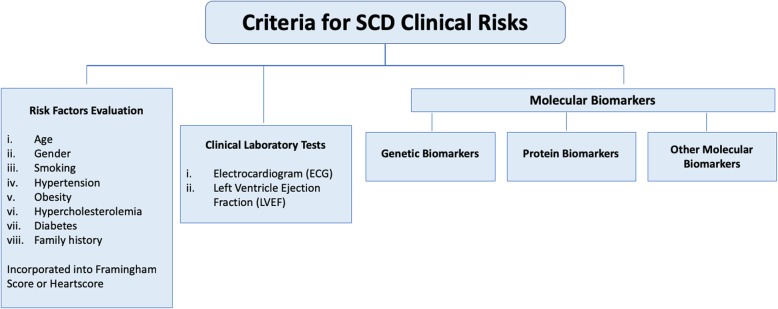Fig. 1.
Methods to evaluate and diagnose SCD clinical risks. SCD risks can be evaluated using Framingham risk score or Heartscore, that stratify SCD risks according to the listed criteria. More commonly, diagnosis is performed in the clinics using tests that can detect cardiac symptoms such as abnormal heart rates, electrocardiogram (ECG), or Left Ventricle Ejection Fraction (LVEF). With the advent in molecular medicine, clinical tests are moving towards molecular biomarkers. Genetic biomarkers are effective for screening high-penetrance genome variants that predispose asymptomatic individuals to SCD, for example genes that encode ion channels. On the other hand, protein biomarkers for SCD often depict pathophysiology for coronary artery diseases (CAD) or heart failure (HF). These protein biomarkers are often involved in oxidative stress, inflammation, neurohormonal regulation, hemodynamic properties and myocardial stress. Besides, molecular biomarkers also encompass other biomolecules such as fatty acids and other metabolites

